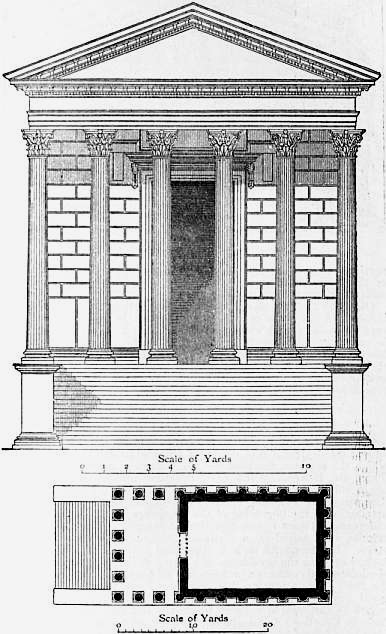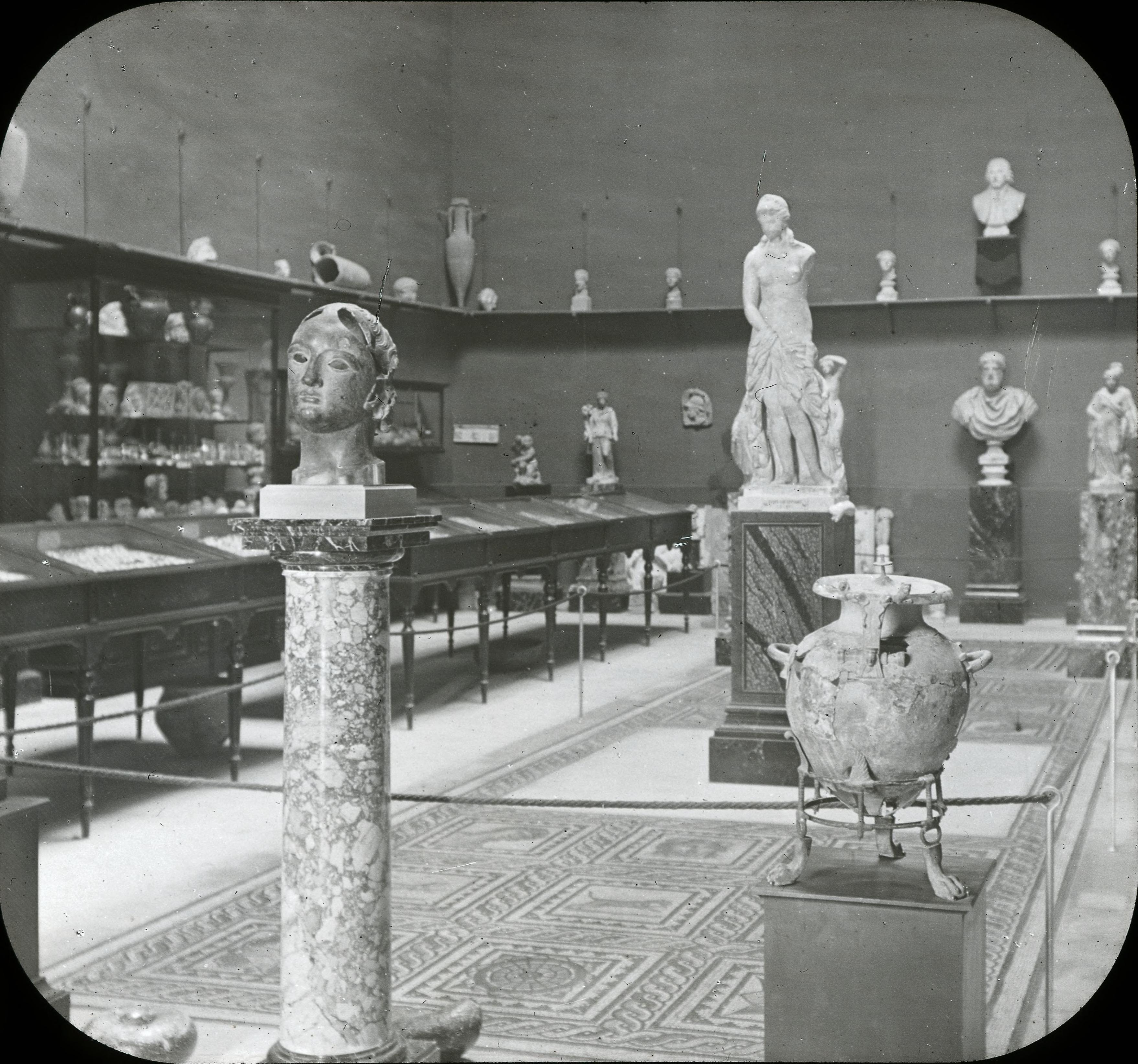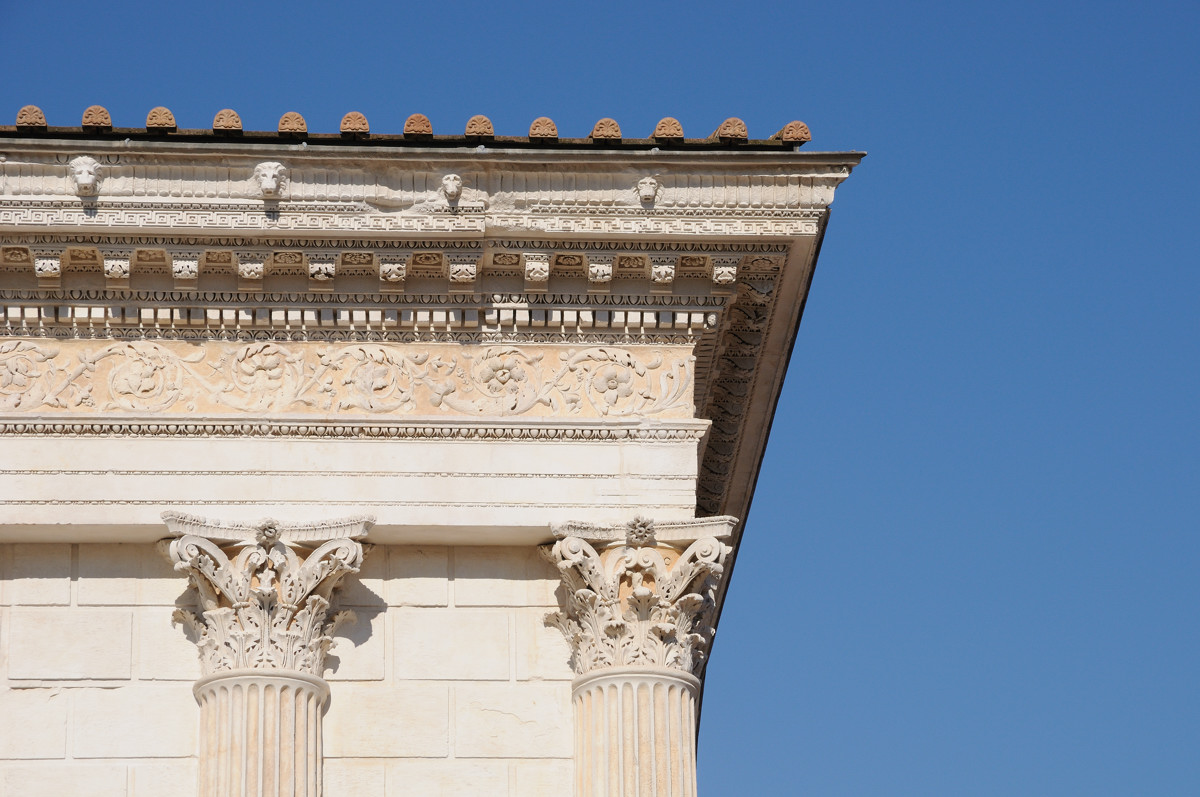Maison Carree, UNKNOWN DESIGNER, Classical Roman, NIMES, France, 117 AD

Image 1: Plan and section of Maison Carrée
Many existing projects and/or ruins from the Classical Roman empire are located in modern day Italy. There are also many projects located in the large expanse of the remainder of the empire that once flourished outside of Italy. Maison Carrée is a beautiful little gem of a project remaining in excellent condition from 117 A.D. in Nimes, France. Nimes was well known for the dark blue dyes the city produced, similar to the color in blue jean material. The Maison Carrée (image 1) is one of the best preserved Roman temples today. It is a rectangular Roman temple with frontal stairs and porch with PEDIMENT. The building has one door leading to the CELLA, the only interior space with no windows (image 3). The plan is divided roughly into three uneven parts: stairs, porch and interior.

Image 2: View of the Pilasters engaged with the wall
The walls draw attention to an interesting detail. The columns of the porch are independently freestanding. The columns at the cella are PILASTERS, drawing attention to a columnar structure engaged with the wall (image 2). One reading of this detail is how the Romans were able to resolve a structural issue, making the cella as large as possible maintaining a continuity of the structure on the perimeter. In creating the pilaster, the Romans created a larger interior space, yet keep the exterior to be consistent. The Maison Carrée employs CORINTHIAN columns engaged with the wall (image 4).

Image 3: Interior view of cella of the Maison Carrée where there are no windows

Image 4: Detail view of Corinthian columns at Maison Carrée
This surrounding context around the project has changed over almost 2000 years. Adjacent to the Maison Carrée is the Mediatheque, by British architect Sir Norman Foster. The scale of the Mediatheque is significantly larger than the Maison Carrée; it could have easily overwhelmed the small scale of the Maison Carrée. Foster skillfully designs scale relationships and proportions through several techniques. First, the Mediatheque has a frontal porch with columns (though simplified) similar to the Maison Carrée. The proportions of the Mediatheque porch are of the GOLDEN RECTANGLE, the same proportions designing the whole of the Maison Carrée. While the Mediatheque is a significantly larger building, the proportions facing the Maison Carrée are of a similar scaled proportion. Though the golden rectangle seems an antiquated method for designing buildings, the Mediatheque is an excellent example how a contemporary building can be influenced by an historical precedent yet innovative.
Media Attributions
- Plan and Elevation Drawings of the Maison Carree is licensed under a Public Domain license
- Image shows Maison Carree Exterior © Monsieur Paradis
- Interior View of the Maison Carree © University of Michigan Library is licensed under a Public Domain license
- Image shows Maison Carree Details and Columns © Guido Andolfato
triangular cap to a temple originally, but also many other building types
the interior most zone of a temple housing statues and important objects to the culture
column engaged with a wall structure; pilasters can be either semi-circular or square in shape
third in the series of Greek order of columns; Corinthian is taller than IONIC, and features acanthus leaves and VOLUTES shifting to the corner of the CAPITAL, creating a more three dimensional column capital
proportions whose relationships embody those of the GOLDEN SECTION
